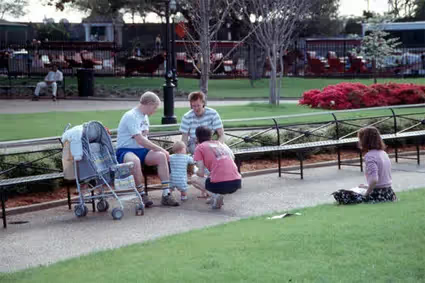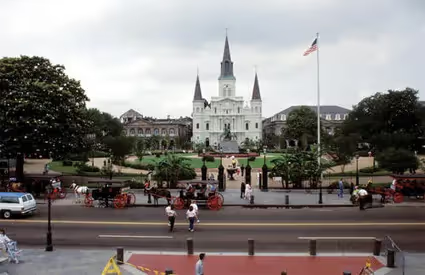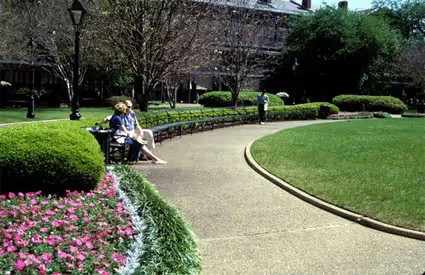A biweekly newsletter with public space news, resources, and opportunities.
A curated dispatch on all things public markets plus the latest announcements from the Market Cities Program.
Please note that these Hall of Shame nominations were written in a moment in time (most over a decade ago) and likely have since changed or even been transformed. If the above entry is now great, or still not so great, go ahead and comment below on how it has evolved or nominate it as a great place.

This lively and heavily trafficked park in the French Quarter is a popular site for artists, street performers and musicians who entertain tourists and locals.

This remarkable square at the center of New Orleans' French Quarter is beautifully laid out, with historic buildings on three sides facing out on a lush park full of trees, flowers and pathways. Outside the park, set apart by an elegant fence, a bustling pedestrian thoroughfare swings with the activity of musicians, artists, vendors, and street performers. The approach from neighboring streets is equally impressive, exemplifying the principle that we at PPS frequently describe as "reaching out like an octopus." As you get closer and closer, catching tantalizing views of the square, the street level experience becomes more interesting and the expectation of what lies ahead grabs you with a real force.
Jackson Square is one of many "sacred places" in an extraordinary city. Those sacred places should be the anchors of New Orleans' rebirth. If each neighborhood can renew itself around a central public place like Jackson Square, the city may emerge from the catastrophe of Katrina stronger than it was before.
Jackson Square began as the Place d'Armes and was originally laid out by Audrien de Pauger in 1721 as a military parade grounds and site for public hangings. It's situated at the central point of the Vieux Carre (Old Quarter) of New Orleans, and was flanked by a number of important community landmarks, including the St. Louis Cathedral (circa 1794); and the Cabildo (circa 1799), named for the Spanish council (cabildo) that met there; and Presbytere (circa 1797).
The Baroness Micaela Pontalba is credited with the transformation of the park from military grounds to one of the country's most lovely public spaces. With the completion of her Pontalba Apartments in 1852 along one side of the square - a famed landmark in the district, with iron balconies and other flourishes - she also commissioned fences, gardens and landscaped the grounds in a sun pattern. The square became a meeting ground for up-and coming Creoles and the ground floor apartments were filled with shops and offices.
The square was renamed Jackson Square in 1856 to honor Andrew Jackson, the hero of the Battle of New Orleans in the War of 1812 and later U.S. President. Its centerpiece sculpture is an equestrian statue of Jackson sculpted by Clark Mills.




*Please note that these Hall of Shame nominations were written in a moment in time (most over a decade ago) and likely have since changed or even been transformed. If the above entry is now great, or still not so great, go ahead and comment below on how it has evolved or nominate it as a great place.